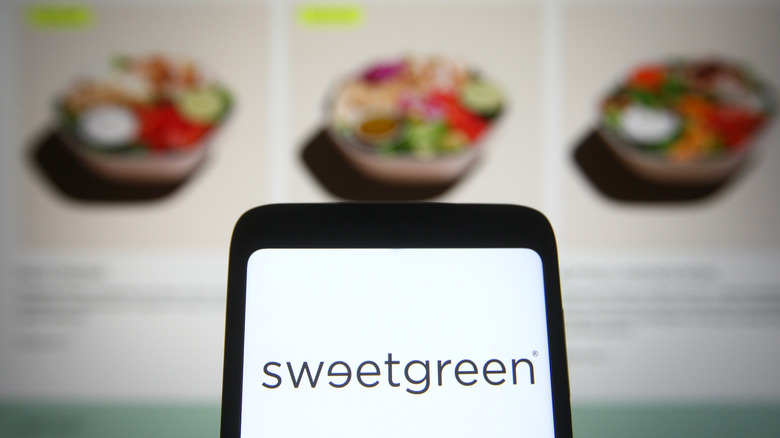Chipotle Has Officially Won Its Food Fight With Sweetgreen
When a guest walks into a quick-service restaurant and asks for a flame-grilled burger, they don't expect to be served two beef patties on a sesame seed bun. While some brand names have become generic equivalents for a product, food names are more specific, a lesson that Sweetgreen learned the hard way. On April 4, Chipotle filed a civil federal trademark infringement lawsuit against Sweetgreen and its chipotle chicken burrito bowl. The complaint alleged that Sweetgreen's menu item could cause consumer confusion due to the similar name, font, and color choice. CNN reported that Chipotle sought to protect "our valuable trademarks and intellectual property" by filing.
As reported by CNBC.com, both parties have decided to resolve the pending litigation outside of the courtroom. Sweetgreen has renamed the new menu item the "Chicken + Chipotle Pepper Bowl." Although the terms of the tentative agreement have not been made public, Sweetgreen said in a statement, "We are looking forward to putting this lawsuit behind us as we continue to connect more people to real food." Chipotle responded in kind with a statement acknowledging the name change and reiterating the importance of protecting their intellectual property rights.
Although the term "burrito bowl" might be generic, the phrase "chipotle chicken burrito bowl" in the quick-service restaurant world appears to denote one particular food order to consumers. For the next quick-service menu launch, brands might want to set themselves apart from industry competitors. Imitation is not a form of flattery in the trademark infringement category.
Why do brands sue over trademark infringement?
In the food world, competition is fierce, and brand recognition can create customer loyalty. Some people will only choose that red can with white lettering over a blue can with a circular logo. Whether it's the name, the color, or even the font, consumers have an expectation when they pick one can over the other. When two brands in the same industry have similar appearance, it can cause consumer confusion, which can lead to trademark infringement lawsuits. As seen in the legal filings between Chipotle and Sweetgreen, it was more than just a menu item name. It was the color, font, and overall potential confusion between the two offerings within the quick-service restaurant space.
As QSR explains, the understanding of protected, descriptive trademarks can clarify trademark issues. The concept of being "inherently distinctive" helps to distinguish generic words or concepts. In the case of the burrito bowl battle, it's not the chipotle flavor that was the issue. It was the phraseology and visual depiction that could cause consumer confusion and potentially negatively impact the Chipotle restaurant brand.
These types of legal disputes are not new. Whether it's a burrito bowl or the current Supreme Court case involving Jack Daniels and a dog toy, companies don't want their brand or its image tarnished. If a consumer's eyes can't distinguish one brand from another, a trademark infringement case could be on the horizon.

